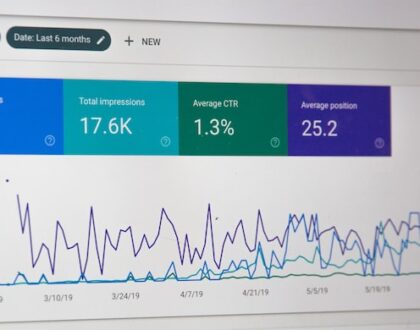13 best publishing game monetization models

by local
13 best publishing game monetization models
“Adapt or perish,” you’ve heard it a thousand times. This is the mindset of game developers when it comes to mobile game monetization in this day and age, when the next big thing is only a few seconds away. There are various excellent monetization options available, but determining which format is best for you might be difficult.
As an ad management partner who has assisted several game publishers worldwide, we have broken down the finest ideas that will help you scale your ad revenue while keeping your gamers satisfied.
Fortunately, there are several tried-and-true monetization tactics that can be implemented by any developer. The key is to know where to seek for them. If you’re looking for a new way to make money from your game, this blog post has all you need to know!
This post will provide you with 13 of the greatest game monetization strategies for game creators and publishers, as well as information on what works.
1. Banner ads
Banner ads are perhaps the most common sort of ad unit in video games. These are the banners that appear at the top and bottom of the screen.
This monetization model can be handled in a variety of ways, depending on how much control you desire over the ad’s presentation. As banners, you can use static images or animate them with animations. To take it a step further, you might employ HTML5 banner themes that are more closely related to your game and contain more interactive components.
The position of banners on the screen is the primary factor of how much income they earn. This is why it is critical to test various positions and placements within your game to determine which ones work best for your game type and intended audience. If a player sees an ad and doesn’t care about it, he or she will simply ignore it; however, if it catches their attention, they are more likely to click through (CTR).
2. Interstitial ads.
Interstitial advertising, often known as full screen commercials, are ad units that take up the entire screen of a player while they are gaming. It can readily capture attention and hold it for 3-5 seconds. Unlike banner ads, which fade into the background over time, interstitials must be acknowledged before proceeding. As a result, they normally pay more, but they must be presented well. Interstitials, for example, should be put before or after levels, or between lives. They shouldn’t be at an exciting portion of the game because it will irritate players and cause them to leave. The money-making strategy is to deploy interstitial adverts between levels or during level trailers.
3. Video Pre-Roll.
For game creators, video pre-roll adverts are the most effective monetization approach. Consider them a TV commercial in your game! Pre-roll adverts appear before a game loads and are frequent in free-to-play games due to their high profitability.
All businesses are heavily investing in video pre-roll ads since they are the most effective at increasing brand awareness and audience engagement. But that’s not all they’re good at. With video pre-rolls, you can personalize your advertisements to your target audience’s interests, increasing the possibility of ad conversion.
4. Notification Ads.
Notification ads are one of the most unpleasant forms of monetization, but they are also one of the most effective. When someone logs into your game and completes a level, you send a push notice to their phone (or tablet, or computer) directing them somewhere else (typically, an offer wall). They click on the ad, complete a certain activity (such as watching a video), and pay you. If used in conjunction with an HTML5 game, it can easily be utilized to send customers to other websites where they can make purchases without ever leaving your website.
While I admit that I appreciate a good notice ad or two, these pests can be more than a little annoying. Nonetheless, they are extremely efficient in capturing users’ attention and directing them toward a monetary goal.
5. Game Exit Ad.
On their way out of your game, this is a fantastic chance to present an ad for another game.
We frequently have little control over where our players are when they play our games. They could be using a mobile device to briefly check Facebook or Twitter, or they could be using a computer to look up something on Google. In any case, by presenting your player an ad for another game just as they are about to leave, you are taking advantage of their most vulnerable state: soon after they have finished playing one of your games.
They just played your game, therefore they have a favorable opinion of it and of you as the developer. Your adverts will be fresh in their thoughts, and they will be far more likely than usual to click on them. Even if they aren’t instantly interested in any of your advertisements, they will remember that you developed that fantastic game they played and that you have other cool games as well. You’ll remain top-of-mind with them and continue to receive clicks, which means more cash for you!
6. Sponsored Game Ad.
Sponsored Game Ads entail exchanging promotions with other game producers in order for both sides to profit, get more users, and earn more money. A “More games” option on the menu screen that displays sponsored or partner games is a fantastic addition that does not appear to be an advertisement.
You might integrate sponsored or partner games in your own menu screen and earn money for each click. They may not be as popular as your other possibilities, but it’s still a way to supplement the money you’re making from other sources.
When you include sponsored games on your app or website, you usually earn money based on “CPI.” This stands for “cost per install,” and it signifies that you’ve made a particular amount of money for each individual who clicks on the advertisement and installs the game.
7. Affiliate Offers/ Coupons.
An affiliate offer occurs when someone owns a product or service, and you convince your user to purchase their product or service in exchange for a commission. When affiliate offers are highly targeted, they perform exceptionally well. If your game is a war simulation game and your affiliate offer is for something fairly comparable, it is most likely a suitable match. If you create a learning game and your affiliate offers are for educational things, you should be fine. You get the picture. These offers are frequently given in the form of coupons, so your user can, for example, acquire a free one-month trial of Netflix by using your promotion code. This rewards them, provides you a commission, and everyone wins.
8. In-game Purchases.
One of the most common business concepts to emerge from the gaming industry is in-game purchases. “Free to play” (F2P) games provide a free-to-download game experience, but you can subsequently purchase in-game things or experiences. Although this model has been around for a while, its popularity is growing. F2P games have gotten so popular that they are now being used to promote other companies.
9. Add-ons.
You wish to sell extras? That’s a fantastic concept because it’s a proven method in the gaming industry. For example, after purchasing the game, you can buy additional packs to get even more adventure out of it. It’s a popular and profitable mobile gaming format. There are various types of add-ons, such as expansion packs, characters, weaponry, and new missions.
First, you must ensure that your consumers are truly addicted to your game. When they are, they are more ready to purchase an add-on since they believe they would benefit more from it.
10. Subscriptions.
When your games are routinely played and have a significant number of players, it may be time to investigate a subscription-based approach.
Subscriptions can be a very effective way to make money if your game has high retention rates and users enjoy it. This is perfect for MMOs or games with regular updates and fresh content. The subscription revenue model is used to sustain these games.
Clash of Clans, for example, has three membership options: $4.99 per week for full access (ad free), $14.99 per month for full access (ad free), and $29.99 per month for ad-free play + 30 gems every day. That alone is enough to hook someone on Clash Royale’s addictive gameplay and make them wonder why they don’t use their phone more frequently.
11. Paywalls.
You may experiment with a pay-wall strategy, in which users can play the game for free for a limited time before having to pay to continue playing. Boom Beach and Clash of Clans, for example, utilise this strategy, with users allowed to play the games for free in whatever way they choose, but having to pay if they want access to all elements of the game. This strategy has several significant advantages over ads: there are no unpleasant pop-ups or other distractions while playing the game. Pay-walls also allow you to create a user base before asking for money from everyone.
If you look at it from the perspective of a gamer, you’ll undoubtedly agree that if you really enjoy playing a game, you’ll probably be willing to spend anything extra to keep playing it.
12. Additional Paid Content.
Additional paid content is the most common type of post-launch monetization and includes any type of additional content you might add to your game once the main product is released, such as paid storylines and characters, new weapons, gear, or other types of in-game items that players can spend real money on.
Assume you’re working on a project called Epic Quest. Epic Quest contains a base plot that takes the player from level 1 to level 20 when it first releases. Once the game is out there and people are enjoying it, your team may opt to make four more storylines available for purchase. These new narratives would be available as downloadable content (DLC) for $5 apiece.
The developers benefit from ongoing revenue rather than making all of their money at once, as they would with an initial sale.
13. Episodic Paid Content.
Episodic games are similar to episode-based media in that they are sold in portions. Instead of one $50 game, you sell ten $5 episodes. This works particularly well for story and adventure games with high retention. Rather than selling the entire game for $50 up front, you can increase sales significantly by releasing episodes one at a time with a week or two in between. But be careful: if you make the first episode too short, viewers might not buy the rest (but it will still likely lead to many more sales than if they had to buy everything up front).
This model’s structure is also suitable for mobile devices. People’s attention spans are shorter, therefore it’s more difficult to keep them when they’re playing on their phones or tablet. You can better retain customers over time by selling your game in little portions, while also ensuring they don’t forget what’s going on in your tale between episodes.
wrapping up
It is crucial to note that you do not have to limit your game to one way of money generating; instead, you should test other choices until you find what works best for you.
With so many options available, tell us which ones are your favorites. Some are specific to the type of game you’ve made, but most are applicable to any game. The key is to pick the one that best matches your game and allows you to earn more money with less effort. Choose and apply a plan that is appropriate for your goals, game, and user growth.
Whatever technique is finally chosen, it is vital to guarantee that the game’s aims and core demands are not compromised in order to maximize revenues.
You may make things easier and save time by letting us handle the monetization so you can focus on game development.
Recommended Posts

Maximizing Revenue Growth Through Sales and Marketing Alignment
October 11, 2024

How Marketers May Assist Increase Martech Utilization
April 8, 2024

Stop accidental clicks on your advertisements right now
November 1, 2022
